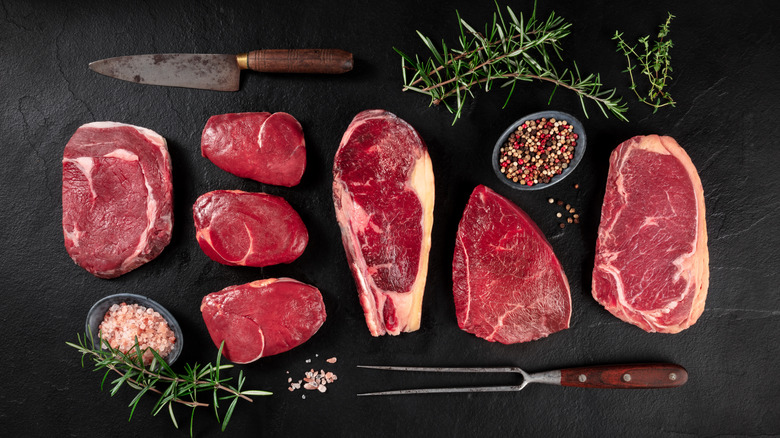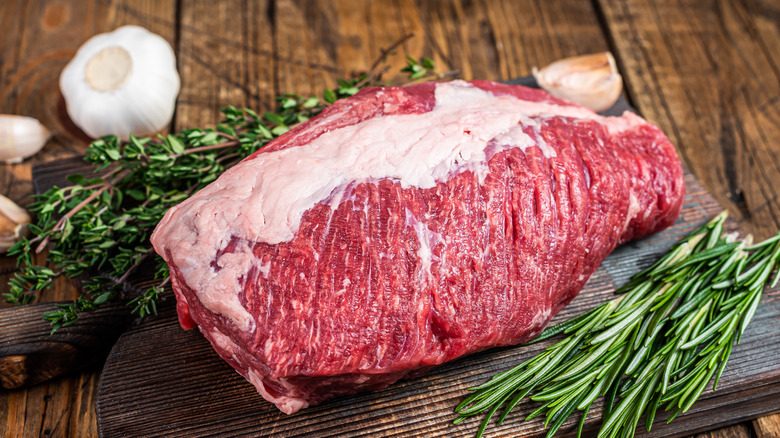You Should Pay Attention To Muscle Fibers Before Cooking A Cut Of Beef
We've been advised to look at marbling when it comes to deciphering the quality of the beef — the USDA's grading system of meat is based on it. However, assessing the thickness of the muscle fibers in a cut of beef will clue you into just how much jaw power you will need to chew on it.
The tenderness of a cut of beef depends upon the muscle fibers, as well as the marbling. Marbling is the white threads of fat you see in a piece of meat that melt as you cook it and impart juiciness and flavor. The muscle fibers in beef are directly related to how much exercise that area of the cow's body gets. Meats with less marbling and thicker fibers tend to come from muscles of the cow's body that are used a lot. Not only will checking out the muscle fibers clue you into the toughness of the cut, they will also tell you the best method to cook it to maximize tenderness and flavor.
Best cooking methods for different levels of muscle fiber thickness
Beef cuts with thicker muscle fibers do best with a low and slow cooking approach. Think braising in a Dutch oven, slow cooking, and stews. Tougher cuts tend to be inexpensive and may have a fat cap, so the longer period of time spent cooking allows the muscle fibers to break down and the fat to render off. Common cuts with thick fibers include chuck roast, rib cuts, rump roast, the eye of round, shank, and brisket. An exception to this is the cuts from the plate of the cow. This includes the popular thinner flank, hanger, and skirt steaks. They come from the cow's abdominal area, and, while tough, do well with a quick sear on a hot grill or sliced and stir-fried, cut against the grain.
Cuts with thinner muscle fibers do well with dry-heat cooking methods, such as grilling and pan-searing. The cuts with the thinnest fibers come from the loin of the cow, such as tenderloin, filet mignon, and strip. How to decipher if a cut of meat has thick or thin muscle fibers just takes an eye — if you are able to see bundles of the fibers (known as the grain), they're considered thick, and low and slow is the way to go. If you cannot make out the fibers and the meat is generally soft upon touch, it's a tender cut that will fare well with dry and quick cooking.

